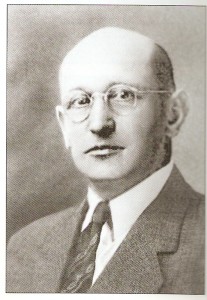Adams, Arthur Alexandrovich (1885-1969)

rthur Adams
Born in 1885 in Sweden, of Swedish descent, Adams was a long-time operative and resident of Soviet military intelligence in the United States during the 1930s and 1940s. He lived in Russia from 1891, graduating from the Kronshtadt school of naval mechanics in 1903 and then working in a number of cities in the south of Russia. He became a member of the Bolshevik faction of the RSDRP in 1904, taking an active part in the revolutionary movement and being arrested repeatedly. In 1907, Adams immigrated to Canada, where he graduated from the University of Toronto as a mechanical engineer in 1913. He worked at factories in both Canada and the United States (which he officially entered from Canada in 1915) and took part in the labor movement of both countries. In 1908, he joined the American Socialist Party. From 1919 to 1921, he served on the staff of the so-called Martens Mission – a diplomatic mission, headed by Ludwig Martens, which Soviet Russia opened in New York, but the U. S. government did not recognize. After Martens was deported in 1921, Adams returned to Soviet Russia. In 1921, he became the first director of the Moscow Auto Factory (AMO) and, beginning in 1923, held several leadership positions in Soviet industry.
From 1927 to 1932, Adams made several long trips to the United States: in 1927, to gain experience of American production methods for heavy-duty trucks; in 1928, to place orders for the Soviet armaments industry (acting as a representative of Amtorg, the Soviet trade organization); and in 1932, to negotiate the Soviet purchase of American Curtiss-Wright fighter planes (acting this time as a representative of the Soviet AVIATRUST).
In 1934, he joined Soviet military intelligence. According to biographical data published in Russia, Adams was an “illegal” resident of Soviet military intelligence in the United States from December 1935 to the spring of 1938 – and reportedly obtained valuable information on military radio engineering, electronics and military chemistry from his agent network. According to recent Russian publications, Adams also had a small group of sources in Washington, D.C., which concentrated on gathering political information. After he was recalled to Moscow, on June 14, 1938, he was discharged from military intelligence service but then quickly reinstated.
In June 1939, Adams was again posted to the United States as an “illegal” resident, using his employment with the Electronics Corporation of America as cover. He is reported to have obtained for Moscow a significant volume of military/technical information, including, most importantly, information on atomic bomb development and nuclear research. He is also said to have obtained more than 5,000 pages of copies of documentation and dozens of samples, including some radioactive materials. In November 1944, he was placed under FBI surveillance, and in December 1945, the U.S. press carried stories exposing him as a Soviet intelligence agent. Adams then disappeared – and reportedly returned to the Soviet Union in the later part of 1946. Soon thereafter, he was granted the Soviet citizenship, was awarded the rank of Colonel-Engineer, but he retired from the intelligence service in 1948. In 1999, he was posthumously given the award of a Hero of the Russian Federation. 1
Watch for alerts on this website to learn more about Arthur Adams and his U.S. missions.
- V.M. Lurie, V. Ya. Kochik, GRU: Dela I ljudi. Moskva: Olma-Press, 2003, str. 331-332 (GRU: Deeds and People, by V. M. Lurie and V.Ya. Kochik. Moscow: OLMA-PRESS, 2003, pp.331-332); Valerij Kochik. Razvedchiki i rezidenty GRU. Moskva: Jauza/Eksmo, 2004 (The GRU Officers and Residents, by Valery Kochik. Moscow: Yauza/Eksmo, 2004); Vladimir Lota. Tajnye operatsii vtoroj mirovoj vojny. Kniga o voennoj razvedke, 1944 god. Moskva: Molodaja gvardija, 2006, str. 105-133 (The Secret Operations of the World War II. The Book about the Military Intelligence, the year 1944, by Vladimir Lota. Moscow, The Young Guard, 2006, pp. 105-133. ↩


